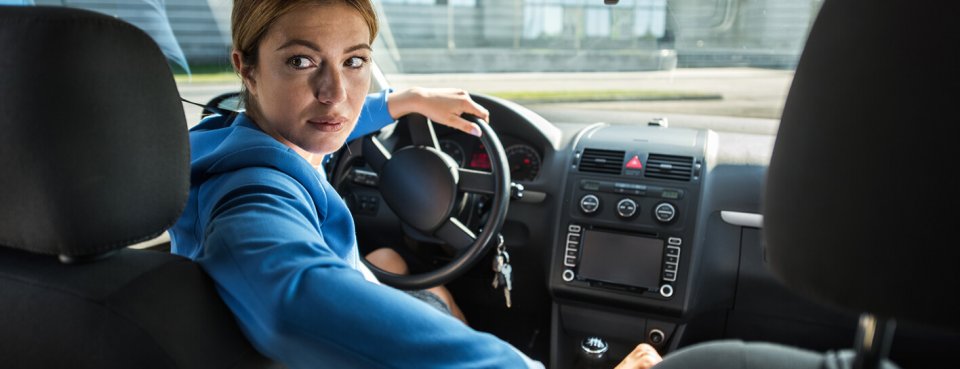
5,000. That’s the number of workplace accidents that happen due to transport a year. 50. That’s the number of people who lose their life as a result.
Workplace transport – as with any area of Health & Safety – must be treated seriously to ensure everyone in and around your business stays safe.
What falls under workplace transport?
Workplace transport encompasses any type of activity that involves vehicles operating on your premises. As a rule, vehicles driven on public roads don’t count – the only exception is when a vehicle is either being loaded or unloaded next to your business.
Your three-step safety guide
When it comes to your transport safety, your responsibilities can be split into three areas: safe site (design and activity), safe vehicle and safe driver. So, what do each of them actually mean? Let’s take a look…
Safe site (design)
When it comes to the design of your site, there are seven areas to pay attention to:
| Area | Consideration |
| Segregation | How do you separate pedestrians and vehicles? |
| Traffic routes | Can all routes safely accommodate the size, height and weight of your largest vehicles? Pay attention to things like slopes, loose ground, blind or sharp corners and obstructions, to name just a few. |
| Temporary traffic routes | Have these been scoped out and do they meet the same safety standards as your usual traffic routes? |
| Visibility | Drivers and pedestrians must have sufficient visibility to see each other coming from a safe enough distance away. Do you have mirrors located on blind corners to assist with visibility? |
| Speed | Have you assessed what an appropriate speed limit is? And have you put suitable measures in place and enforced them? Options might include speed limit signs, speed humps or chicanes, for example. Whichever option(s) you choose, make sure you take any knock-on risks into consideration. |
| Signs, signals and markings | Do you have suitable signs in place, like the ones used on public roads? |
| Lighting | Sufficient lighting is required at all times, but pay particular attention to places where loading and unloading takes place, vehicles manoeuvre, and vehicles and pedestrians cross paths. |
Safe site (activity)
When it comes to transport activity, reversing is a key area to look at – in fact, it’s the cause of around one quarter of all transport-related deaths.
Ideally, you should try to remove the need for reversing full stop. That said, we get that this isn’t always practicable, if it isn’t you could consider:
- Instating barriers to clearly separate vehicle and pedestrian zones
- Investing in portable radios (or something similar) to effectively communicate transport activity
- Explicitly mark and communicate where designated reversing areas are.
For a proper look at how else you can minimise reversing risks, get in touch with our Health & Safety experts.
Other important areas to look out for include:
| Area | Consideration |
| Signalling | If the amount of transport activity warrants it, could you make use of banksmen to safely guide drivers? |
| Parking | Make sure your parking areas are clearly marked, try to have separate areas for commercial and private vehicles, and make sure vehicles are only left unattended when it’s safe to do so – i.e. it’s securely braked. |
| Coupling and uncoupling | Are areas where this activity takes place well lit? And are those responsible sufficiently trained? |
| Loading and unloading | Has everyone been trained on how to safely load and unload vehicles? Is the area on ground level? And protected from bad weather conditions where possible? |
| Tipping | To prevent accidents during tipping operations, ask yourself: are pedestrians in the tipping area? Is the vehicle left unattended? Are there any overhead obstacles? The answer to all three should be no! |
| Overturning | To prevent vehicles overturning, pay attention to things like the suitability of the vehicle for the job, its operating speed and the condition of the route – to name just a few. |
| Sheeting | First and foremost, see if the sheeting can be done from the ground to remove the need for working at height. If it can’t be avoided, consider the use of Personal Protective Equipment (PPE) and barriers to control any risks. |
| Housekeeping | Are all routes that’re used by vehicles clear of obstruction, clean and well-signed? |
Safe vehicle
All workplace vehicles in use must be suitable for their purpose and well-maintained. Where possible, you should remove the need for work to be done at height, and drivers must be able to clearly see around the vehicle – installing special mirrors could solve this.
Most vehicles will need to meet the standards set out in the Road Vehicles (Construction and Use) Regulations 1986, however, some vehicles (like mobile plant) will be bound by specific supply standards.
When it comes to the maintenance side of things, all vehicles must be mechanically safe and their devices in working order.
We’d recommend providing employees with a checklist for daily safety checks, with a view of them being carried out prior to any shift.
Safe driver
Every single employee who’s behind the wheel must be competent to do so, and receive sufficient and relevant training, information and instruction before getting the ignition going.
In addition, you should continually keep an eye on employees’ need for training and their fitness to operate vehicles. And for those employees responsible for guiding large vehicles in and out of a site, banksman training may be required.
And that’s just for starters
When it comes to transport safety there’s lots to consider, and what we’ve included in this article is just the tip of the iceberg.
For an in-depth look at all areas on transport safety – including shared premises, consultation with employees, contractors and the public, remember, our Health & Safety experts are available 24/7 with our advice line.
Not yet a Citation client? Not a problem. Get in touch with the team on 0345 844 1111 or hello@citation.co.uk.


